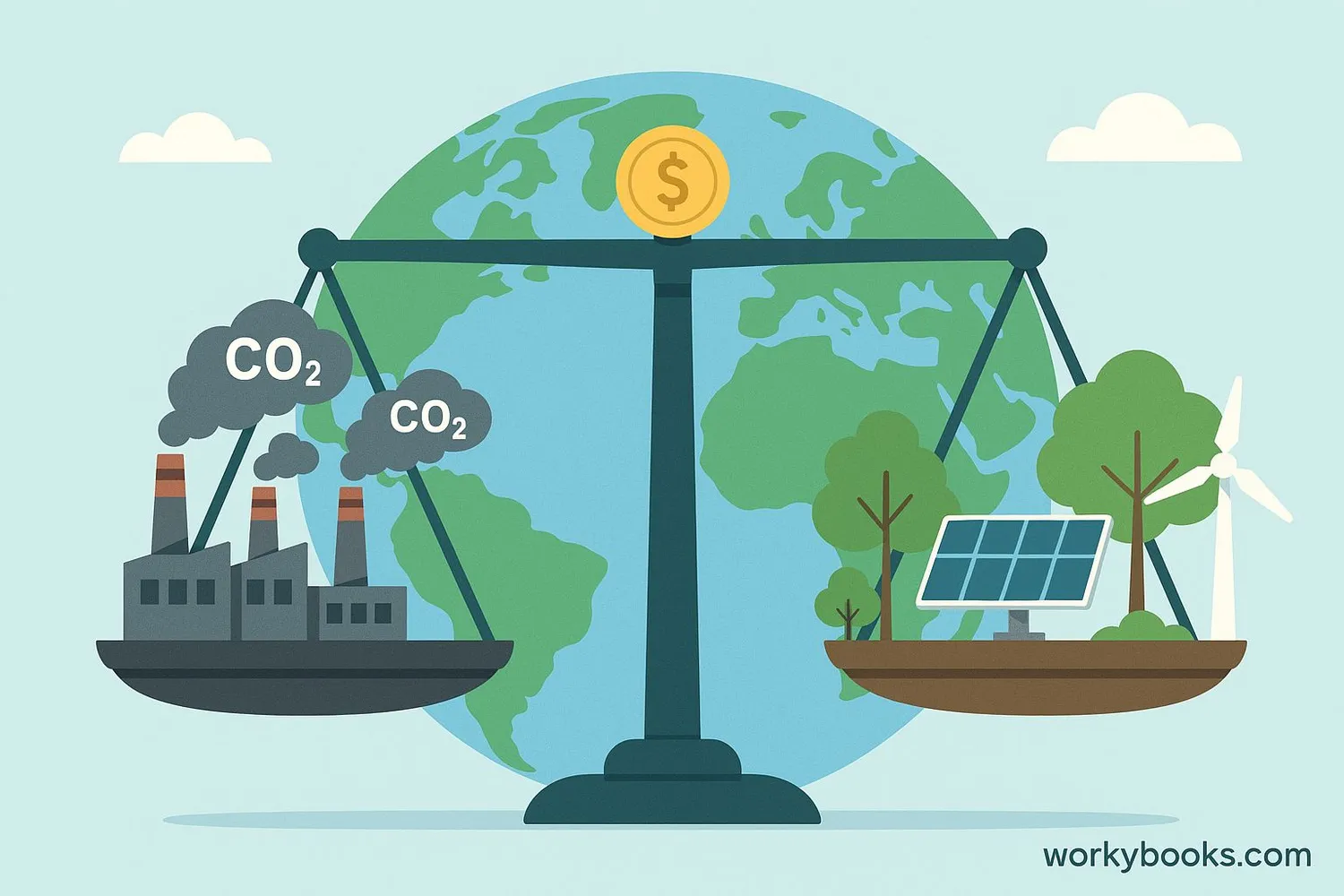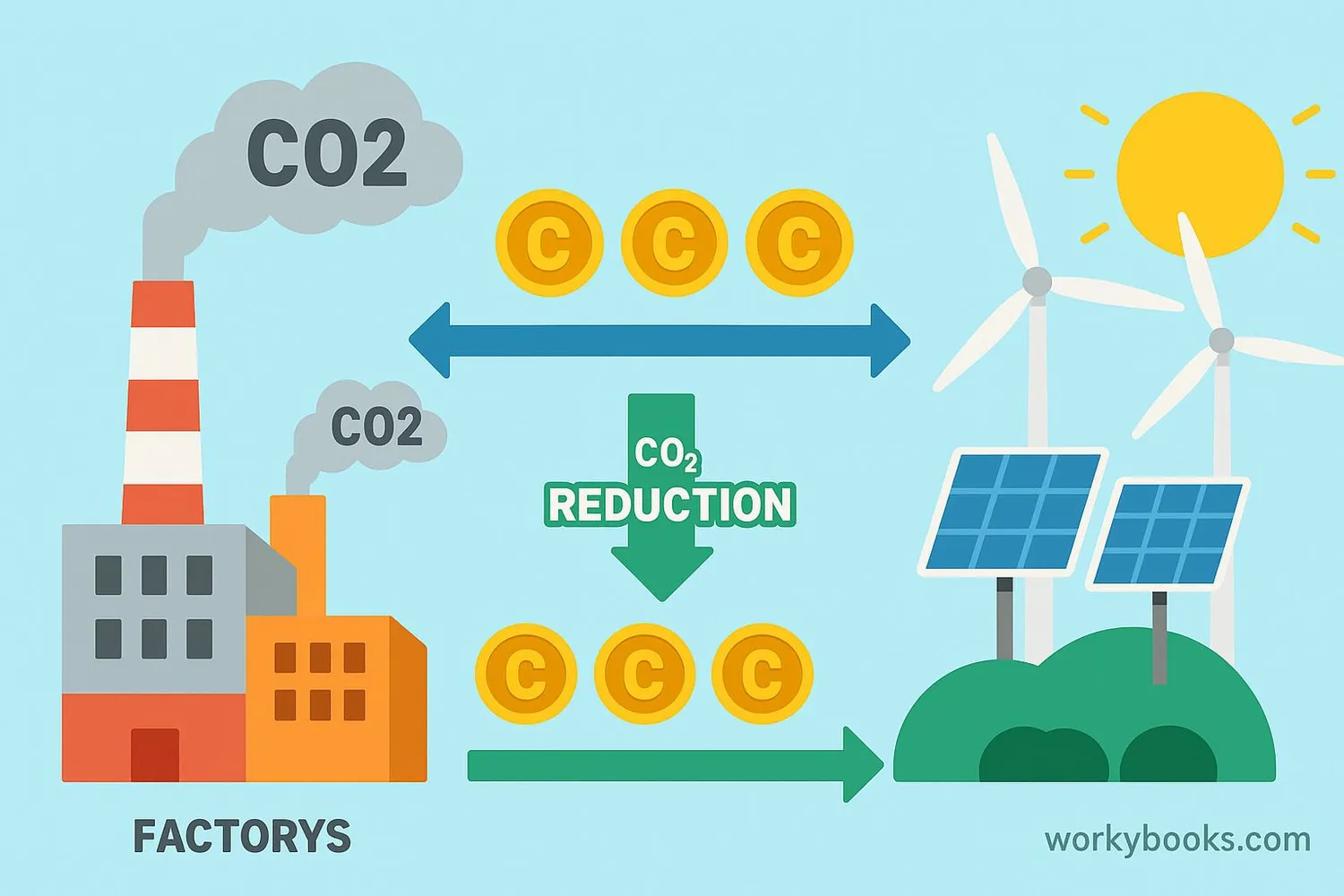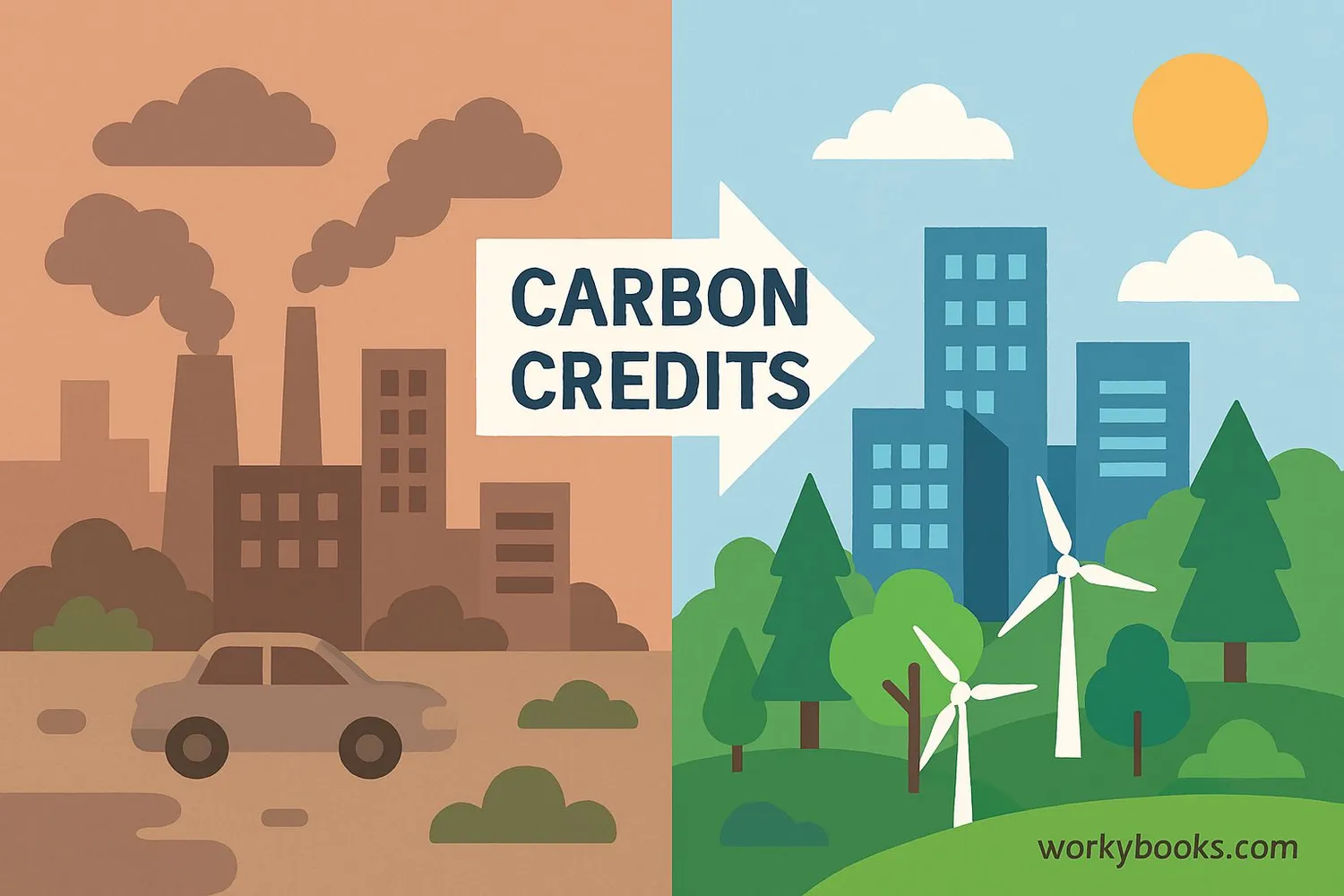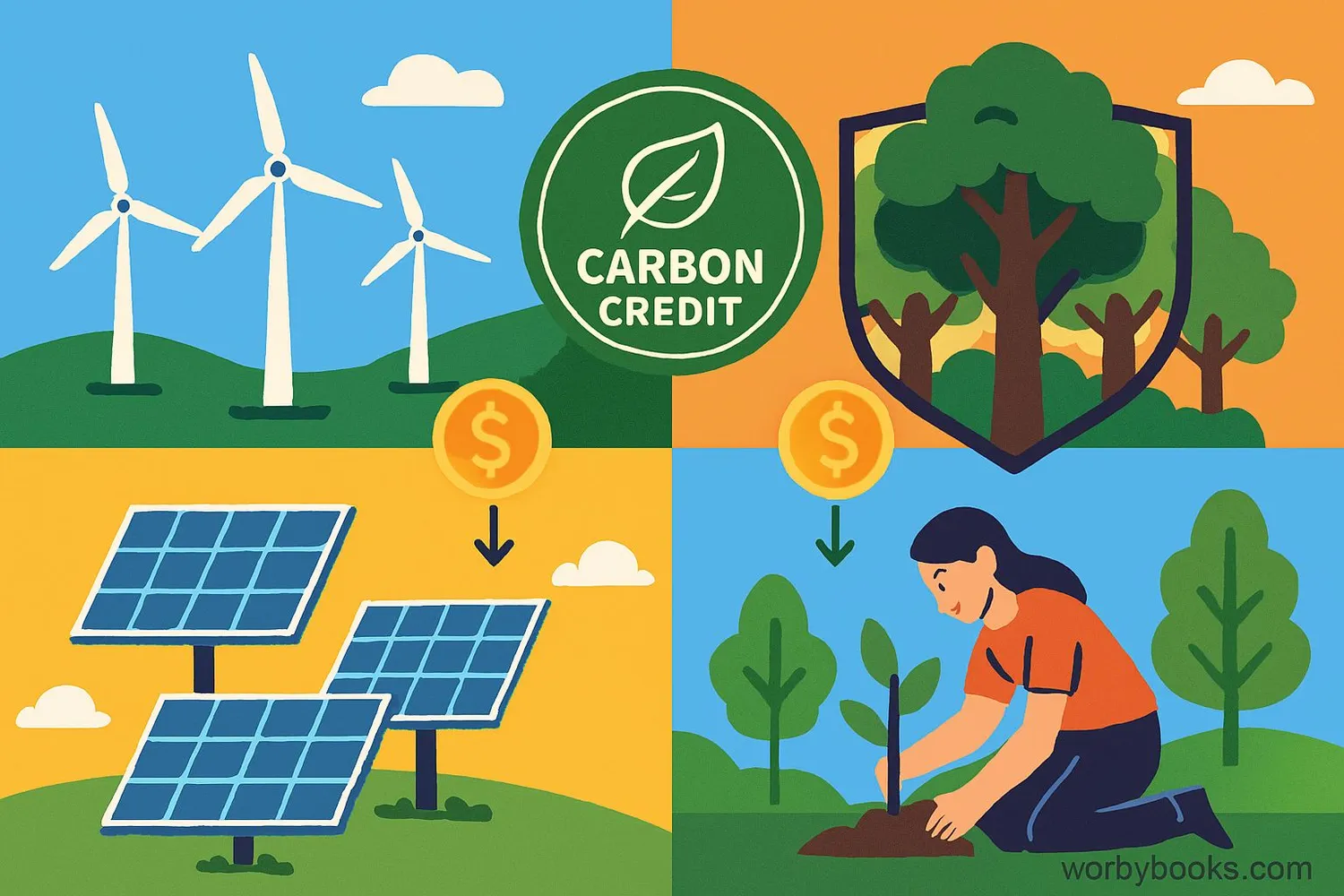Carbon Credits - Definition, Examples, Quiz, FAQ, Trivia
Discover how we can help the planet by reducing greenhouse gases!
What Are Carbon Credits?

Carbon credits are like special permission slips that allow companies to release a certain amount of carbon dioxide (CO2) into the air. Each credit equals one metric ton of CO2.
Think of it as an environmental allowance system. If a company wants to release greenhouse gases, it needs credits to do so. But here's the important part: companies can also earn credits by reducing pollution or by supporting projects that remove CO2 from the atmosphere!
Environmental Fact!
Carbon credits create a financial incentive for companies to reduce their carbon footprint and invest in cleaner technologies.
How Carbon Credits Work

The carbon credit system works through a marketplace where organizations can buy and sell credits. This creates an economic incentive to reduce emissions. Here's the process:
Set Limits
Governments set emission limits for industries
Earn Credits
Companies earn credits by reducing emissions below their limit
Trading
Companies can buy/sell credits in the carbon market
Offset
Companies over their limit buy credits to offset emissions
Projects
Money funds sustainability projects that reduce CO2
There are two main types of carbon markets:
Compliance markets - Created by laws requiring emission reductions
Voluntary markets - Where companies/individuals choose to offset emissions
Market Growth!
The global carbon credit market was worth over $850 billion in 2021 and continues to grow as more countries commit to reducing emissions.
Why Carbon Credits Matter

Carbon credits play a vital role in fighting climate change. Here's why they're important:
Reduce Emissions
Create financial incentives for companies to pollute less
Fund Projects
Finance renewable energy and conservation efforts
Global Solution
Enable worldwide cooperation on climate issues
Without carbon credits:
• Companies would have less motivation to reduce emissions
• Important environmental projects would lack funding
• It would be harder to meet global climate targets
Carbon credits are part of a larger solution to create a sustainable future for our planet!
Examples and Projects

Carbon credits fund many important environmental projects around the world. Here are some examples:
Renewable Energy
Building wind and solar farms to replace fossil fuels
Forest Conservation
Protecting existing forests that absorb CO2
Clean Water Projects
Providing clean water to reduce wood burning for boiling
Methane Capture
Capturing methane from landfills and farms
Real World Example: In Kenya, carbon credit sales fund the installation of efficient cookstoves that use less wood. This reduces deforestation and CO2 emissions while improving health for families.
The voluntary carbon market allows individuals to purchase credits to offset their personal carbon footprint from activities like flying or home energy use.
Carbon Credits Quiz
Test your knowledge with this carbon credits quiz! Answer all 5 questions to see how much you've learned.
Frequently Asked Questions
Here are answers to common questions about carbon credits:
Fun Carbon Credits Trivia
Discover some fascinating facts about carbon credits and climate solutions!
Forest Power
A single mature tree can absorb about 48 pounds of CO2 per year. That means it takes about 42 trees to offset the carbon from one ton of CO2 emissions!
Growing Market
The voluntary carbon market grew by 60% in 2021, reaching nearly $2 billion. This shows increasing commitment from companies to address their climate impact!
Flight Offsets
A round-trip flight from New York to London generates about 1 ton of CO2 per passenger. Many airlines now offer carbon credit options when you book tickets!
Innovative Projects
Some carbon credit projects use new technologies like direct air capture machines that pull CO2 directly from the atmosphere and store it underground!





